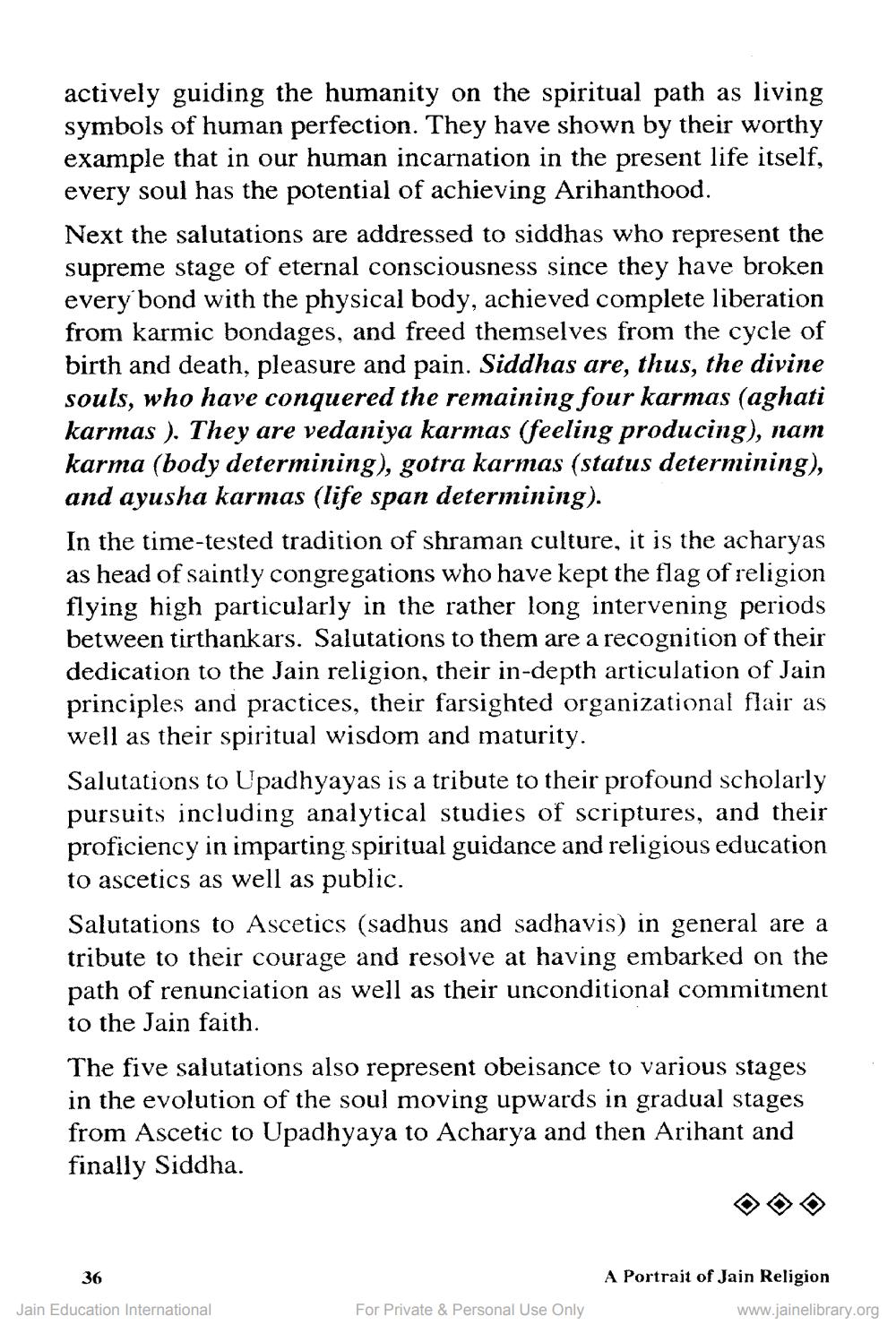________________
actively guiding the humanity on the spiritual path as living symbols of human perfection. They have shown by their worthy example that in our human incarnation in the present life itself, every soul has the potential of achieving Arihanthood.
Next the salutations are addressed to siddhas who represent the supreme stage of eternal consciousness since they have broken every bond with the physical body, achieved complete liberation from karmic bondages, and freed themselves from the cycle of birth and death, pleasure and pain. Siddhas are, thus, the divine souls, who have conquered the remaining four karmas (aghati karmas). They are vedaniya karmas (feeling producing), nam karma (body determining), gotra karmas (status determining), and ayusha karmas (life span determining).
In the time-tested tradition of shraman culture, it is the acharyas as head of saintly congregations who have kept the flag of religion flying high particularly in the rather long intervening periods between tirthankars. Salutations to them are a recognition of their dedication to the Jain religion, their in-depth articulation of Jain principles and practices, their farsighted organizational flair as well as their spiritual wisdom and maturity.
Salutations to Upadhyayas is a tribute to their profound scholarly pursuits including analytical studies of scriptures, and their proficiency in imparting spiritual guidance and religious education to ascetics as well as public.
Salutations to Ascetics (sadhus and sadhavis) in general are a tribute to their courage and resolve at having embarked on the path of renunciation as well as their unconditional commitment to the Jain faith.
The five salutations also represent obeisance to various stages in the evolution of the soul moving upwards in gradual stages from Ascetic to Upadhyaya to Acharya and then Arihant and finally Siddha.
36
Jain Education International
For Private & Personal Use Only
A Portrait of Jain Religion
www.jainelibrary.org




